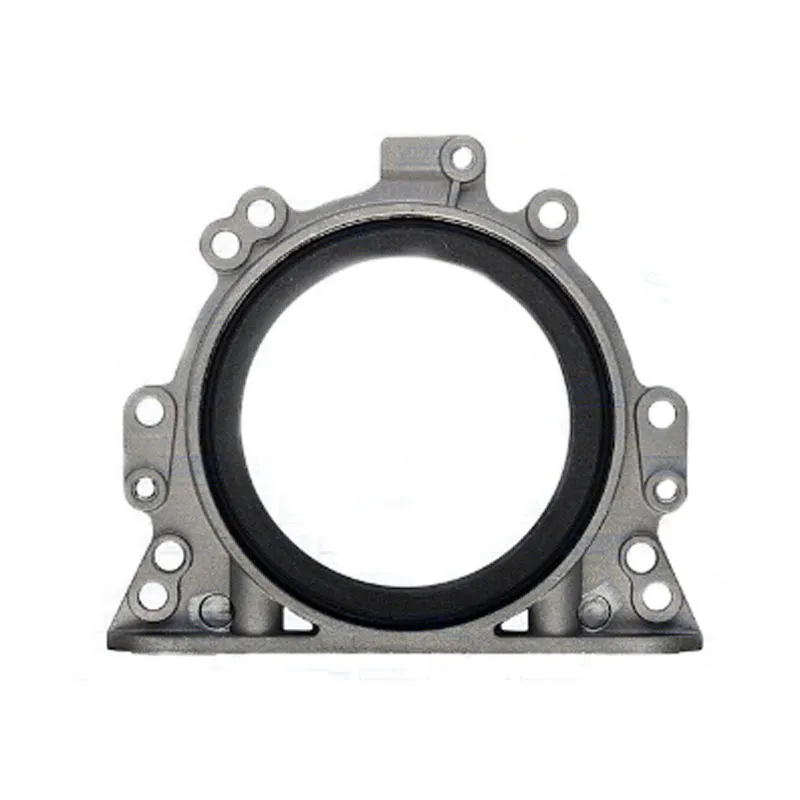rotary shaft lip seal
Understanding Rotary Shaft Lip Seals Function, Design, and Applications
Rotary shaft lip seals are essential components in various mechanical systems, serving a critical role in preventing fluid leakage and contamination. These seals are designed to retain lubricants within static and dynamic systems while keeping dirt and moisture at bay. As a result, they are widely used in industries ranging from automotive to aerospace, where reliability and durability are paramount.
Functionality of Rotary Shaft Lip Seals
The primary purpose of a rotary shaft lip seal is to create a barrier between the rotating shaft and the housing in which it operates. The seal is comprised of a flexible lip, usually made from rubber or polymer materials, that presses against the rotating shaft, forming a tight seal. This design allows the lip to adapt to slight variations in the shaft’s surface, which is crucial for preventing fluids from escaping and foreign particles from entering.
When a rotary shaft rotates, the centrifugal force can potentially push the lubricating oil or grease away from the contact area. Lip seals counteract this phenomenon by maintaining a contact pressure against the shaft, ensuring that the lubricant remains contained. The careful design of the lip profile also aids in minimizing wear and prolongs the seal's life, enhancing the overall performance of the machinery.
Design Elements
Rotary shaft lip seals come in various designs tailored to specific applications. Key design considerations include the material used for the seal, the shape and angle of the lip, and the static and dynamic diameters. Common materials for the seals include nitrile rubber (NBR), fluorocarbon (FKM), and polyacrylate, each chosen based on the temperature and chemical compatibility requirements of their intended application.
rotary shaft lip seal

The lip design is critical for optimizing sealing performance. For example, a single-lip design may suffice in low-pressure applications, while double-lip seals are often preferred in high-pressure situations or where additional contamination protection is required. The addition of a spring element can further enhance the seal's ability to maintain contact with the shaft, improving its effectiveness over time.
Applications Across Industries
Rotary shaft lip seals are ubiquitous in many fields due to their versatility. In the automotive industry, they are commonly used in engines, transmissions, and differential systems to prevent fluid leaks and extend the lifespan of components. Without proper sealing, automotive systems can suffer from premature wear, leading to costly repairs and reduced performance.
In the aerospace sector, rotary shaft seals are vital for ensuring the integrity of hydraulic systems, landing gear assemblies, and engine components. These seals must withstand extreme temperatures, pressure differentials, and exposure to various fluids, necessitating the use of advanced materials and designs.
Manufacturing equipment, such as pumps and motors, also relies heavily on rotary shaft lip seals. Here, the seals not only prevent leaks but also improve energy efficiency by reducing friction losses associated with lubricant escape.
Conclusion
In conclusion, rotary shaft lip seals are a fundamental aspect of modern machinery and equipment, providing essential functions related to fluid retention and contamination prevention. Their designs are subject to rigorous engineering to withstand the specific demands of their applications, ensuring reliability and longevity. As technology progresses and materials improve, rotary shaft lip seals will continue to evolve, playing an indispensable role in enhancing the performance and safety of countless mechanical systems across various industries. Understanding their functionality and applications is crucial for engineers, manufacturers, and technicians who strive to maintain the efficiency and effectiveness of their operations.
-
Understanding the Front Main Engine Seal: Purpose, Maintenance, and Installation
News Jul.29,2025
-
Understanding O-Rings and Seal Rings: Types, Applications, and Custom Solutions
News Jul.29,2025
-
Understanding Crankshaft Oil Seals: Rear Seals, Pulley Seals, and Their Role in Engine Integrity
News Jul.29,2025
-
The Importance of Front and Rear Crankshaft Seals in Engine Performance and Oil Management
News Jul.29,2025
-
Crank Oil Seals: Functions, Types, and Cost Considerations in Engine Maintenance
News Jul.29,2025
-
A Comprehensive Guide to O-Rings and Seals: Types, Materials, and Global Applications
News Jul.29,2025
-
Mastering Diesel and Performance Engine Maintenance: A Guide to Critical Oil Gaskets
News Jul.28,2025
Products categories















